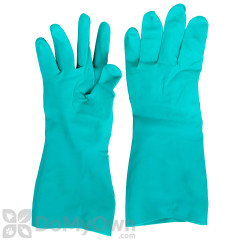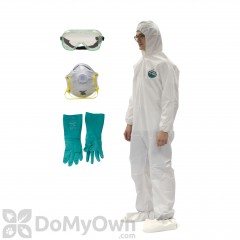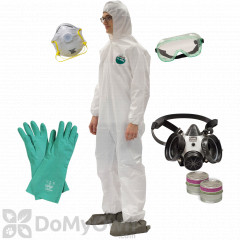Norway Rat Control
There are several good reasons to control rodent populations in your home and to prevent future infestations from occurring. Aside from the damage they cause, the most important reason is that rodents pose a threat to your family's health by carrying and spreading diseases.
There are four basic steps you need to take in prevention and control of rat populations.
Step 1) INSPECTION
In order to assess the severity of the problem and to get a better idea of where to bait and trap, you will first need to perform a thorough inspection of the premises. What you'll want to look for are any signs that rodents are present. You may then concentrate further preventative and control measures where the highest concentration of rodent signs are found.
Rat Identification Helps
- Droppings- Norway Rat droppings are 1/4 to 1/2 inch in length, capsule shaped, with blunt ends. They are usually a shiny black, but may vary according to diet. Rat droppings are three times as large as mouse droppings.
- Tracks- Outdoors, the runways of Norway rats appear smooth, well packed, and free of vegetations. Indoors, runways appear as clean paths through dust or dirt. Norway rats leave a hind foot track of about 3/4-1 inch. A mouse's tracks will be much shorter. Rats will also drag their tails, leaving a mark between their feet tracks. Grease marks (from the oil and dirt of rats) often appear along walls next to runways.
- Gnawing holes- Gnawing holes from rats are about 2 inches or more in diameter and will have rough edges. They prefer gnawing on wood but may also damage property, electrical wiring, and food packaging.
- Burrows- Rat burrows measuring about 3 inches in diameter found next to walls, along foundations, or beneath debris are another sign when dealing with Norway rats.
- Urine Stains & Odors- Rodent urine deposited on rodent runways appear as a line of fine drops or streaks under an ultraviolet flashlight, or black light tool.
- Sightings & Sounds- Since rodents are nocturnal and live secretively under normal circumstances, you can be sure that regular daytime rodent sightings indicate a heavy infestation. Various sounds that indicate rodent activity include gnawing, scratching, and digging noises.
Step 2) SANITATION
Sanitation is the single most important measure of prevention and control in combating any pest or rodent problem. Rats must have access to a ready supply of food and water to thrive. To reduce rat populations, try the following sanitation measures:
- Store any bulk food items in large metal containers with tight fitting lids, rather than bags or boxes that can easily be gnawed through.
- Remove clutter such as paper and cardboard that rats might use to build their nests
- Remove undesirable vegetation around your home such as grass clippings and weeds
- Keep dog food or other pet food stored in a Rubbermaid container overnight.
Step 3) EXCLUSION
Rats can enter homes and other structures through openings as small as ½ inch. They may also enter through ill-fitted doors, windows, or screens, and air vents that are not in sound or working order. While you will not reasonably be able to compensate for every possible rodent entry, you can greatly reduce the ease of entry for rodents (and thereby, reduce the population size) by taking the following measures:
- Seal any openings larger than ¼ inch with caulk, wood, mesh, or other appropriate materials
- Floor drains and sewer pipes should have tight-fitting grates with openings less than 1/4 inch in diameter.
- Make sure that all doors, windows and screens fit tightly in their frames and repair those that do not. (It might also prove helpful to cover edges of screens with sheet metal to prevent rats from gnawing around them.)
Step 4) POPULATION REDUCTION (with baiting & trapping)
While you are preventing future rat population growth through inspection, sanitation, and exclusion, you will also want to begin working towards elimination of the population that is already present through trapping and baiting. There are two basic methods of rat population reduction:
- TRAPPING is the preferred method of indoor control. The advantages of trapping when compared to baiting include:
- Trapping does not require the use of harmful poisons;
- Trapping allows the user to know whether the rat was killed, whereas with baiting the rat will wander off and die somewhere else;
- Trapping eliminates odor problems by allowing you to dispose of the rat carcass. Use enough traps to eliminate the rodents quickly. Traps should be placed flush with walls in areas of highest travel (as determined by Inspection).
- BAITING. This method uses poisons, or rodenticides, to attract and kill rodents.
- This is a great supplementary treatment to trapping when you are dealing with larger rodent populations, or for outdoor populations.
- Rodents sniff out the bait and return to feed upon it continuously until the poison kills them.
- A few baits are strong enough to cause death with a single feeding.
- You will know the bait is working when the bait is no longer being consumed. This means there are no more rats to feed on it because they are dead. Always be sure that fresh bait is available continuously until rats stop feeding.
Click here for Rat Control Products
Related Articles
Baiting Tips for Mice
Rodent Proofing for Fall
Do I Have Rats?
How To Get Rid of Norway Rats
Related Product Pages
Rat Bait
Rat Poison
Rat Trap
Rat Control


